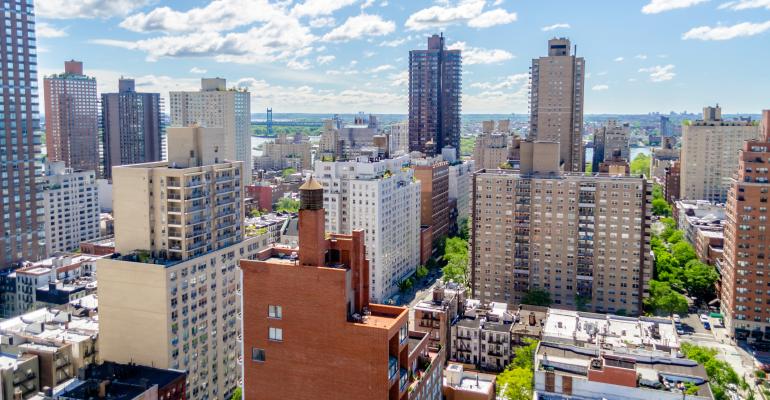Investors have become less willing to pay top prices for apartment buildings in New York City. Prices on apartment assets in Manhattan south of 96th Street have dropped slightly relative to income, and have lost their upward momentum in the rest of the city.
Apartment buildings in the city are still selling—investors spent more on them in the first half of this year than during the same period in 2017. And a few giant sales, like the $905 million purchase of Starrett City in Brooklyn to a joint venture of the Brooksville Co. and the Rockpoint Group, are pushing up total sales volume figures. But as interest rates push higher, investors are becoming more cautious.
“Nobody wants to pay the peak price,” says Jim Costello, senior vice president with New York City-based research firm Real Capital Analytics (RCA).
Cap rates move higher
The prices that investors are paying for properties in much of Manhattan are no longer keeping up with the rent increases. Investors paid an average price of $798,000 per apartment in the first half of 2018 in Manhattan south of 96th Street, according to Ariel Property Advisors, a New York City-based commercial real estate services firm. That’s up quite a bit from $709,000 per apartment the year before.
However, the average cap rate for these buildings rose to 3.80 percent in the first half of 2018, up from 3.53 percent the year before, according to Ariel.
“The interest rate environment has dictated higher cap rate expectations across the board, and therefore put pressure on pricing,” says Shimon Shkury, president and founder of Ariel.
City officials have also become more focused on the enforcement and oversight of the city’s rent regulations. That might be cooling the ambitions of potential buyers to raise the rent at rent-regulated buildings.
Overall, valuations are still rising relative to rental income in Manhattan, but very slowly. Investors paid cap rates averaging 3.6 percent for apartment properties throughout Manhattan in the second quarter of 2018, according to RCA. That’s only slight lower than the average of 3.7 percent the year before.
Cap rates were a little more changeable in the outer boroughs of New York City, falling to 4.4 percent in the second quarter, from 4.6 percent the year before.
Big sales push investment volume up
In the first half of 2018, more than a third of the deals to buy apartment properties in New York City were accounted for by just six transactions, each larger than $100 million. These deals totaled $1.91 billion. In comparison, during the same period last year there was just one sale totaling more than $100 million.
Overall, investors spent $2.8 billion on apartment properties in Manhattan in the first half of 2018, according to RCA. That’s up sharply from $1.6 billion the year before. But it’s still a small number compared to the more than $4 billion that investors spent in the first halves of 2015 and 2016.
“Owners may still feel their buildings are worth yesterday’s price and can they still find financing… They are not motivated to move,” says Costello.
In a reversal from the usual trend, investors spent more money to buy apartment buildings in the outer boroughs than in Manhattan. They spent $3.1 billion on properties in Brooklyn, Queens, Staten Island and the Bronx in the first half of 2018, up from $2.0 billion the year before, according to RCA. The figure is still below the $3.3 billion they spent in the first half of 2016 and the $3.5 billion spent in the first half of 2015.
Starrett City sells in Brooklyn
One sale accounted for nearly a third of the total sales volume so far this year in the outer boroughs. Brooksville and Rockpoint paid $905 million for Starrett City, a vast, affordable housing complex with 5,881 apartments in Brooklyn.
The sellers, Starrett City Associates, had owned the sprawling campus of tan, high-rise apartment buildings since 1974. Many of the apartment balconies have views of nearby Jamaica Bay. The sellers included President Donald Trump, who held a 4 percent share of the ownership.
The deal includes a promise to keep the apartments affordable to low-income New Yorkers for decades. Starrett City’s federal contract for Section 8 rental subsidies will continue through 2049 and it will stay in New York State’s Mitchell Lama program through 2054.





